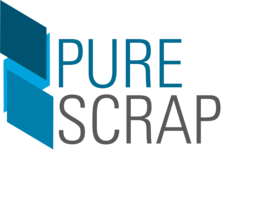Overall approach
In steel production, scrap represents an important raw material. Apart from its main function as a source of iron, it finds its application as a cooling agent in melting furnaces to control the furnace temperature. According to current industry practice, 0.2–0.25 t of scrap per ton of crude steel can be used in the production of crude steel via the Basic Oxygen Furnace (BOF). Within the Electric Arc Furnace (EAF), the possible scrap rate comes up to 100 %, which corresponds to approximately 1.0–1.2 t of scrap per ton of steel. In 2019, the EU28 steel industry recycled ~90 Mt of scrap, which includes scrap from inside the steelworks, cuttings from steel product manufacturers and post-consumer scrap.
Availability of low-grade scrap is increasing, although in some cases, tramp elements, such as copper, tin, chromium, nickel or molybdenum prevent the reuse. This surplus of low-quality scrap within the EU generates enormous scrap exports. In 2019, these amounted to 21.8 Mt. On the contrary, scrap of higher quality is imported to the EU to fulfill the scrap demand for steel production. Compared to the state of the art, PURESCRAP is taking an ambitious, major step toward reducing impurities in post-consumer scrap prior to melting by applying highly efficient sensor stations in conjunction with improved scrap sorting.
Objectives
Reduction of impurities through deploying and applying best available technologies increase the recovery of low-quality scrap. A key part lies in the connection between scrap sorter and the steel industry, which are the consumers of the scrap. This ensures that there exists a demand for the enhanced purification and valorisation methods. The objectives of the PURESCRAP project are as follows:
- Reducing impurities in low-quality scrap through spectroscopy and vision systems
- Enhancing the uptake of post-consumer scrap to produce high-quality steel grades
- Improving the scrap characterisation through image detection and processing models using Deep Learning solutions
- Reducing CO2 emissions by 10–30% for scrap melting compared with reference BF-BOF or EAF operation using increased share of postconsumer scrap
Framework

Project timeline:
2023-01-01 to 2026-06-30
Funding scheme:
This project is funded by the European Union (Grant Agreement no. 101092168).
Project consortium:
Starting with the project coordination, the consortium is composed as follows:
- SWERIM AB
- BT-Wolfgang Binder GmbH
- DANIELI AUTOMATION SPA
- Estep Plateforme Technologique Europeene de l’Acier
- K1-MET GmbH
- Luleå tekniska universitet
- Scuola Superiore di Studi Universitari e di Perfezionamento S Anna
- SPECTRAL Industries BV
- SSAB EMEA AB
- Stena Recycling AB
- Technische Universität Dortmund
- voestalpine Stahl Donawitz GmbH

 DE
DE EN
EN